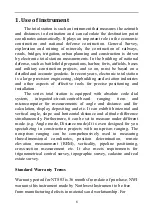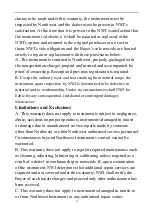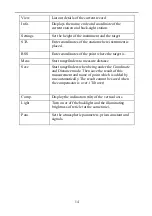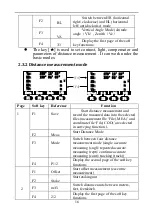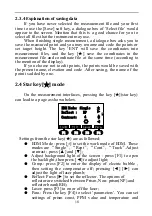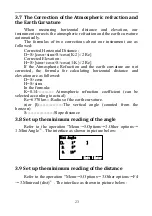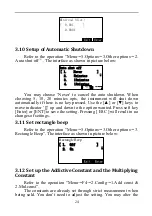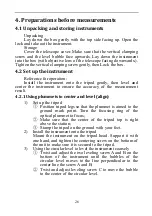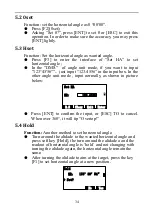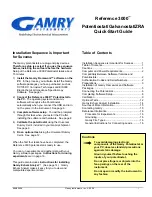
20
3. Initial setup
3.1 On & Off
Press the power key until the screen displays pictures. The
instrument is now switched on.
After self-checking, the instrument enters Angle Mode
automatically (see Angle Mode for details)
Pressing power key will leads to a dialogue box. Press [ENT] to
turn off the instrument.
3.2 Set up the tilt correction of horizontal and vertical
angles
When the tilt (inclination) sensor is on, the instrument will
display the automatic correction value for the vertical angle caused by
not strictly level. In order to ensure the accuracy of the angle
measurement, try to use tilt sensor whose display can be used to level
the instrument better.
If displaying ‗Tilt over!‘ in the ‗Vz‘ column, it indicates that the
instrument beyond the range of the automatic compensation, and
needs to be leveled by adjusting foot screw.
●
Our series total station can correct the error of the vertical
angle reading caused by the tilt on the direction of X axis
and Y axis;
●
Settings of compensator: On and Off
●
When the instrument is under unstable condition or in a
windy day , you should close the compensator ,because the
vertical is unstable .Only this ,can avoid the compensator
beyond the scope of work caused by the jitter and stop
measuring .You can turn off the compensator by the using
star key(
★
) functions.
3.3 Set up the target Type
Our series total station has three reflectors to be selected, which
are prism, non-prism (NP) and reflect board (RB). You can set by job.
You can set it by star key [
★
].
3.4 Set up the Reflecting Prism Constant.
As a prism is selected as a reflector, a prism constant should be
set before any measurement. If the constant is entered and set, it is
saved and will not be erased after switching off the instrument. After
pressing [Para.] key under star key (
★
) mode, a dialogue box would

